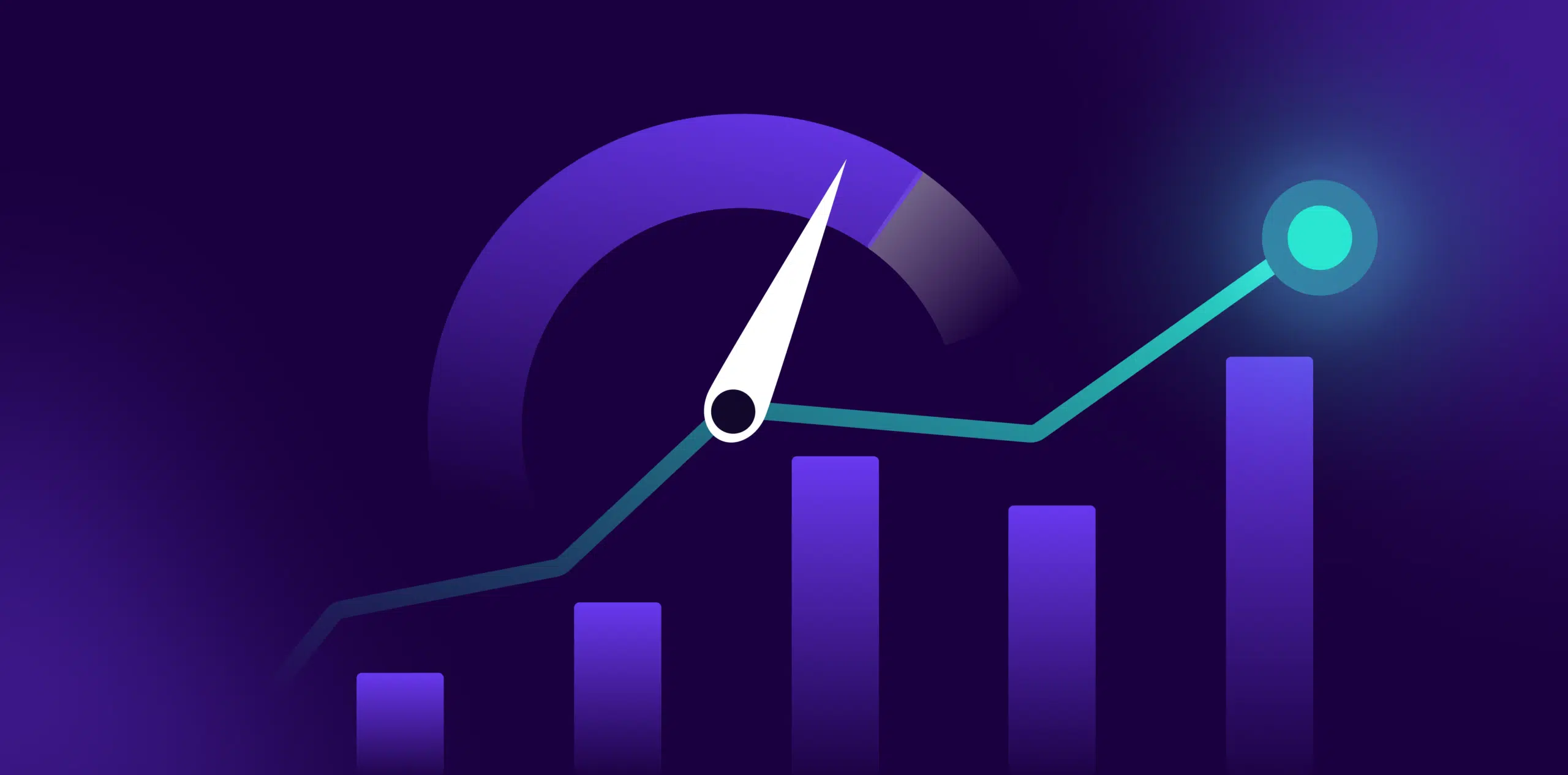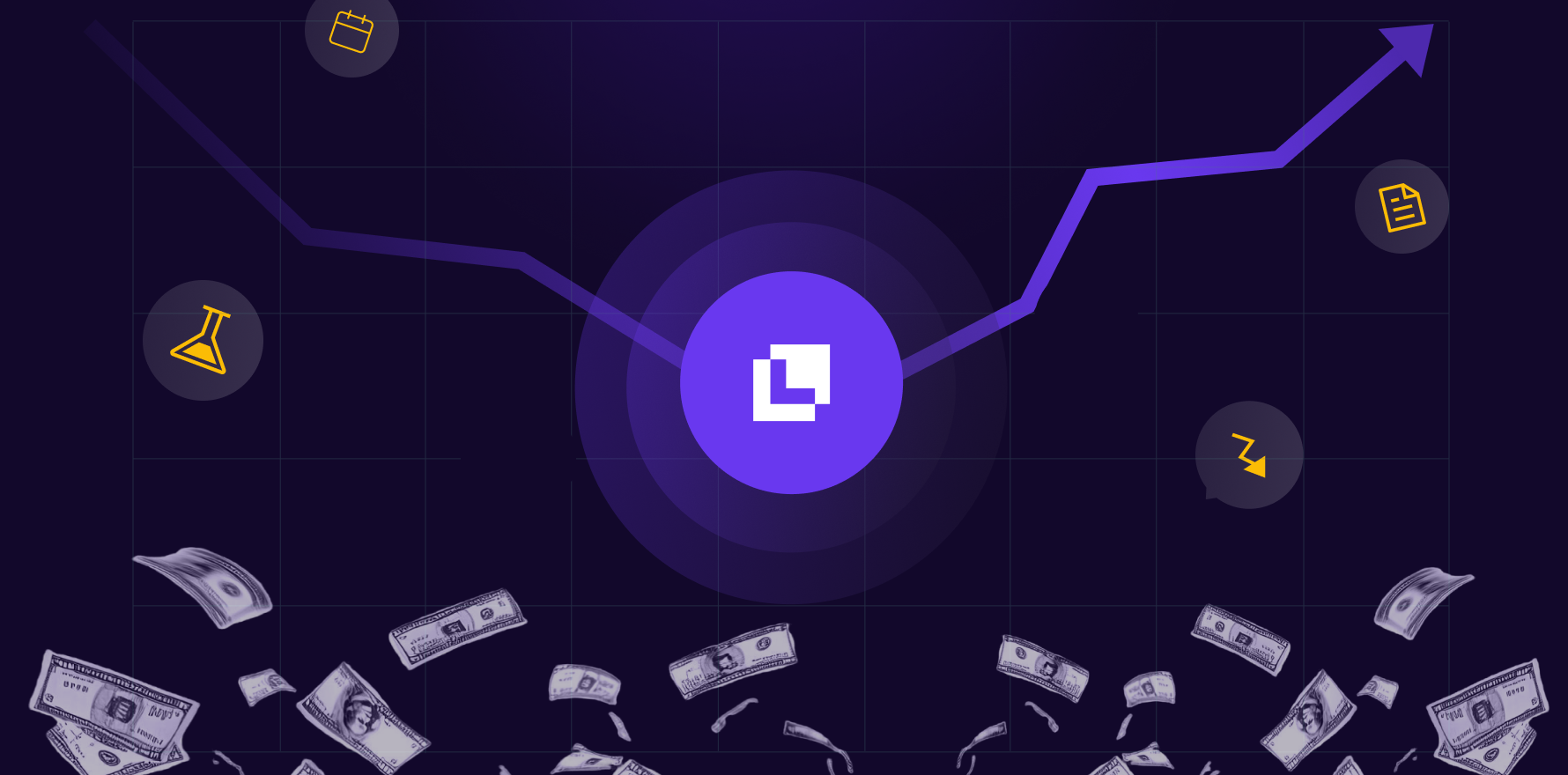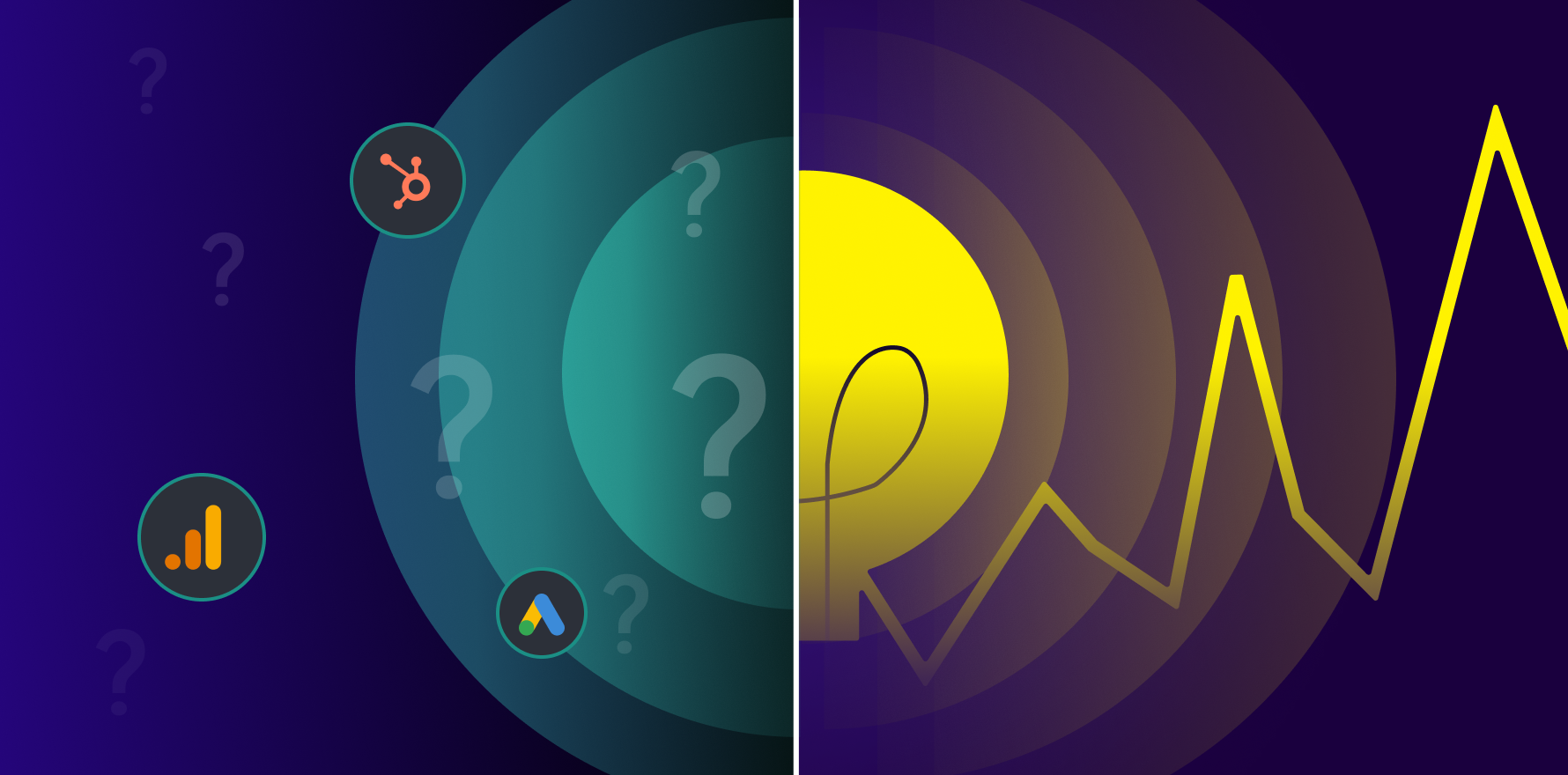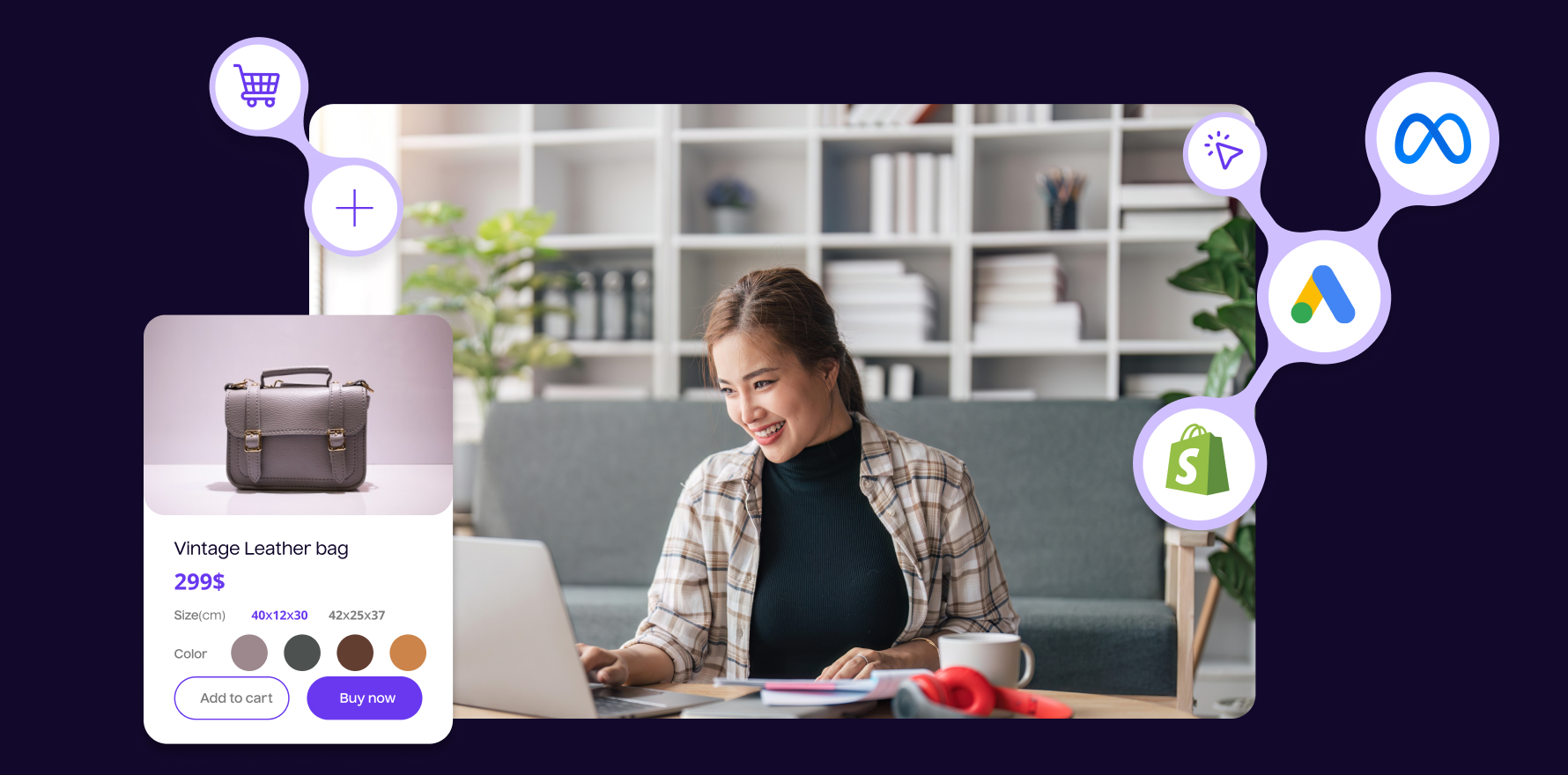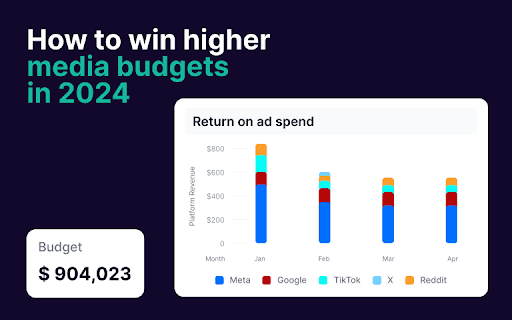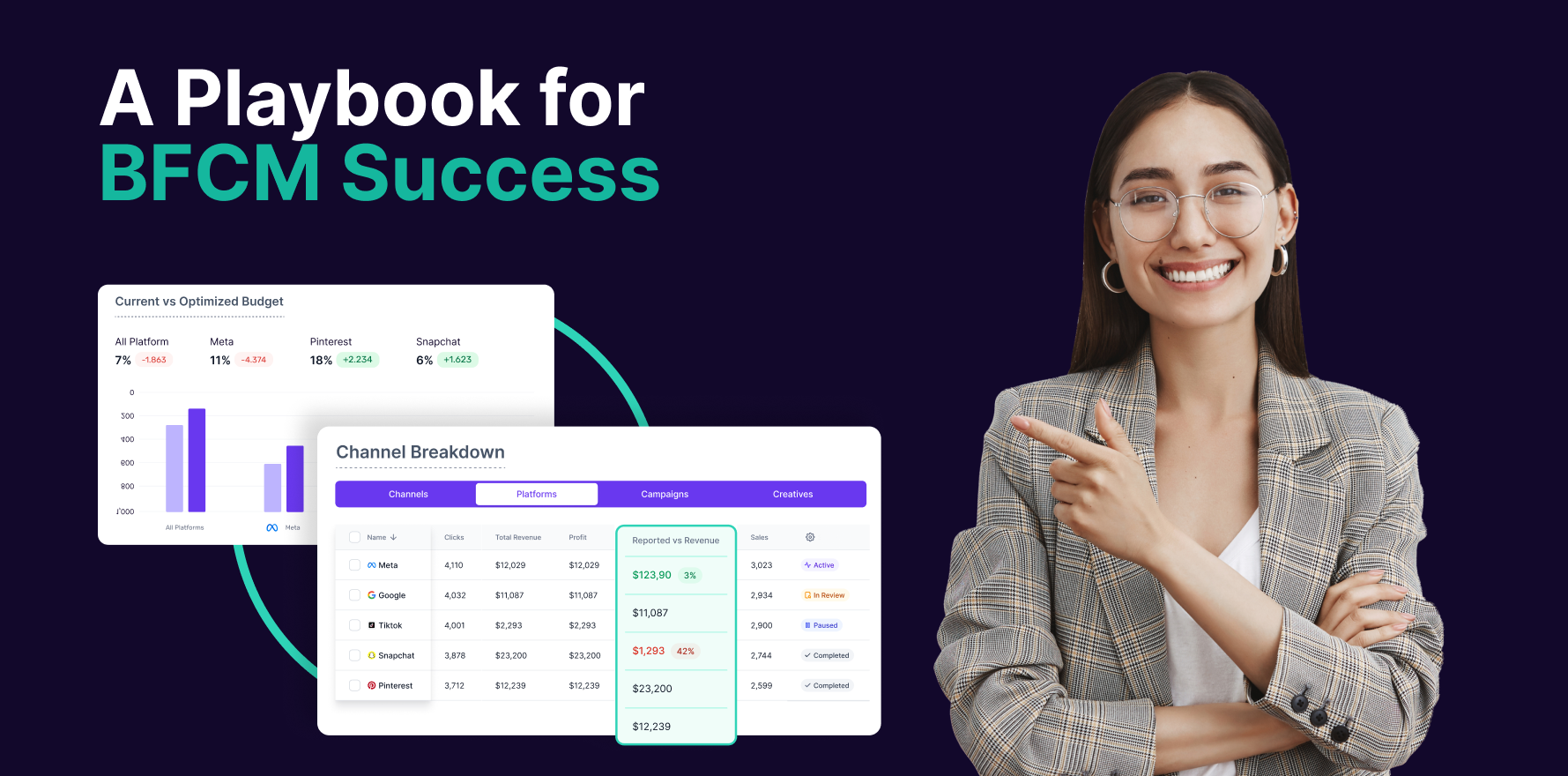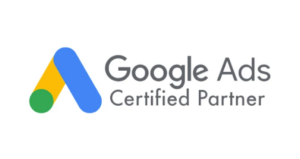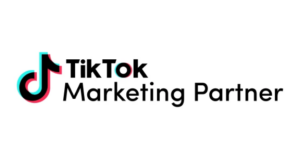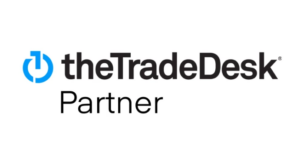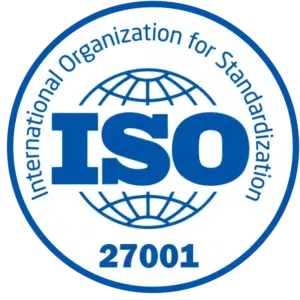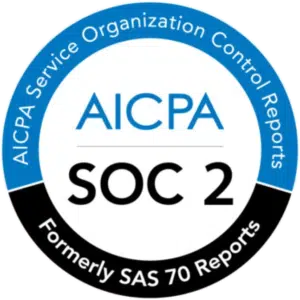Let’s start with some good news for Ecommerce and DTC businesses: Consumers have become accustomed to the concept of social commerce as they have more purchasing power than ever before.
That being said, one of the top challenges for marketers is how to align their social strategy with business goals. If you are a business owner struggling for an ROI from your social media strategy or want to generate more customers and revenue from social media, social media conversions are the best place to start.
Essentially, the social media conversion rate helps assess the efficacy of your social media strategy and identifies the scope of improvement.
In this article, we look at the different (and often unexplored) strategies to increase social media conversion rates for DTC/Ecommerce brands.
How to calculate social media conversion rates?
To calculate social media conversion rates, first decide what action you want users to take, such as purchasing, filling out a form, or signing up for a newsletter. Following the identification of your desired action, you can calculate your social media conversion rate benchmark by the following steps:
- Leverage analytics tools such as Google Analytics or Facebook Insights to track the number of users who visit your website from social media platforms.
- Determine how many users completed the desired action after visiting your website or landing page from social media.
- Divide the number of conversions by the total number of visitors from social media platforms to your website or landing page and multiply by 100.
An example of calculating your average social media conversion rate: if you had 50,000 social media visitors and 500 of them have taken the desired action, your conversion rate would be 1% ((500/50,000) x 100).
Social media conversion rate benchmarks
good-social-media-conversion-rate-benchmarks
Although the average social media conversion rate is 3%, let’s see what is a good conversion rate for social media platform-wise.
Types of social media conversion rates
Social media conversion rates can be classified into multiple types but the most prominent ones are segregated into the following 2 segments.
- Direct conversions: Direct conversion takes place as an immediate result of the desired action taken by the user such as filling out a form, purchasing a particular product, or even subscribing to a newsletter. They are normally attributed to the current touchpoint just before the conversion.
- Assisted conversions: This acts as a catalyst for the final action but is not the only immediate touchpoint. For example, the user might have seen the promotional email or SMS of a particular product and did their research before purchasing it.
Strategies to increase ecommerce social media conversion rates
1) Seamless, campaign-specific, and mobile-friendly landing pages
A brand’s ability to convert shoppers through social media strategy depends on creating a seamless UX/UI and browsing experience. Your social landing pages should be easy to navigate with minimal disruption.
You can use campaign-specific landing pages as well to promote a new product or service and offer special discounts. Think of these pages as your main magnet, attracting only highly qualified leads, thereby increasing conversions.
Social media conversion strategy: Add a link to your interactive landing page if you’re running an offer and promoting it on social media.
A stunning example would be Bose with an intuitive and interactive home page for customers on the go. It enables the customers to have an immersive experience to run ear tip fitment tests.
strategies-to-increase-social-media-conversion-rates-seamless-landing-pages-like-bose
Pro tip : Whether you’re promoting deals on Instagram or Facebook, a mobile-friendly landing page is also a game changer.
2) Include social proof in your social media profiles
While the Ecommerce industry is booming, so are scams that put customers on the defensive stance. Similarly, buyers who are new to your brand will compare you to the competition, and the vast majority of buyers will read between one and 10 reviews before making a purchase.
One way to increase the average social media conversion rate is by adding social proof such as:
- Customer reviews
- Tagging users in UGC posts
- Videos and photos of customers using the products
- Industry awards, accreditations, and certifications
According to the Spiegel Research Center, consumers are 15% more likely to buy when exposed to reviews written by verified buyers against anonymous verification.
To take up the industry average social media conversion rate, including user-generated content (UGC) in your social media strategy. Also, have an active social media presence and regularly engage with your customers.
However, if you’re looking for inspiration for your social media posts, ChatGPT prompts by eCommerce prompts will come to your rescue.
Publish new posts regularly, respond to reviews and comments in a timely manner, and stay relevant. This is one of the best ways to increase the Ecommerce conversion rate for social media.
American Sneakers brand Keds regularly tag users when it posts UGC content. As you can see, these posts receive massive engagement in terms of likes and comments.
strategies-to-increase-social-media-conversion-rates-include-social-proof-like-keds
3) Work with relevant influencers
Influencers can give your social media conversions a much-needed boost as well as take your brand to a highly relevant and engaged audience. Because these influencers often have a loyal following of people who enjoy their content and trust their opinions, they can bring credibility to your brand and products.
Social media conversion tracking tip : For your influencer marketing campaign, provide each user with a UTM link that they can add to their posts or bio so that you can track the conversions each influencer brings.
Labrada Nutrition works with Instagram influencers to announce new product launches. The fitness influencer James Tollefson promotes the new rich dark chocolate flavored protein shake along with adding a link in his bio for followers to purchase the product.
strategies-to-increase-social-media-conversion-rates-work-with-influencers-like-labrada-nutition
Continue reading: A Step-by-Step Guide to Influencer Marketing in Ecommerce
4) Create a persuasive copy to nudge buyers to take action
How many times have you wanted to buy something but couldn’t find important information about size, material, or color? Most of us have experienced this: reading blocks of text praising the product but not telling ourselves exactly what we need to know to make a decision.
According to Baymard’s research, 10% of ecommerce sites have product descriptions that are inadequate for users’ needs.
An important aspect of your social media conversion strategy is to pay attention to writing persuasive copies that inspire the readers to take action.
Travel site Secret Escapes has carefully leveraged CTAs when users search for spa vacations. The CTA here of up to 70% off on joining the newsletter is compelling enough for readers to share their email addresses.
strategies-to-increase-social-media-conversion-rates-create-persuasive-copy-like-secret-escape
The social media ad metrics such as cost per click, total ad spend vs ROI, conversion rates, and so on help you understand the effectiveness of social media conversion tracking.
5) Experiment with captions and CTA to encourage engagement
Adding a strong call to action and caption is a surefire way to increase your website’s conversion rate. But you need to add CTAs to almost every page, not just landing pages. Each CTA will be different depending on the action you want your users to take.
If you’re wondering how to improve your social media ad conversion rate, consider adding a sense of urgency to your CTAs by setting a deadline, using scarcity marketing, or using numbers to make your offer attractive.
In terms of the caption, Pact sets the benchmark really high. It adds a caption explaining some of the key reasons people should buy their bedding: 100% organic cotton and fair trade certified. To allure the buyers, there’s a 25% discount that acts as a topping.
strategies-to-increase-social-media-conversion-rates-ab-test-with-ctas-like-pact
6) Split-test social media ads and posts
Split testing, also known as A/B testing, is a process of testing two or more versions of a website or marketing campaign to choose the best one.
Here are some items you can break down:
- Language, placement, and design of the call to action
- Landing page theme
- Product descriptions
- Payment transaction
- Email campaigns
Social media conversion rate example: Anti-aging skin products seller NuFace did A/B testing to understand how free shipping can positively impact their revenue numbers. Adding free shipping above $75 increased its orders by 90%, as per VWO.
strategies-to-increase-social-media-conversion-rate-ab-test-social-ads-like-nuface
7) Build remarketing audiences based on previous interactions
Remarketing the existing audience can be extremely useful for new product launches or even for upselling and cross-selling. On the basis of previous interactions, the audience can be segregated as previous website page visitors, app users, email subscribers, previous social media engagement, and many more.
For example, to run a remarketing campaign on Instagram, open the Facebook Ads Manager and select the “Audiences” tab. Click the blue Create Audience button and choose Custom Audience, which allows you to segment based on the data you’ve collected. Select your Instagram account as a data source and decide who you want to target. One way to increase your social media ad conversion rate is by using the right ad settings.
strategies-to-increase-social-media-conversion-rate-build-remarketing-audience
8) Sell directly on social
When people have to go through multiple steps in the buying journey, there is always a risk of cart abandonment or drop-off. This is especially true for social media shoppers since you interrupt them mid-browsing. Keeping the buying process as short as possible is critical to the success of your social media conversion strategy.
Brand tip – Keep an eye always on the impression for social selling like on Facebook to understand the efficacy of your shoppable posts.
The shoppable posts on Facebook and Instagram contain product tags that users can click to view and learn more about the product without leaving the platform, enabling social commerce.
A great social media conversion example of selling directly on Facebook is the DTC underwear brand MeUndies. They link featured products to their Facebook catalog. In addition to this, they also add the link to the product page in the Facebook posts.
strategies-to-increase-social-media-conversion-rate-sell-directly-on-social
This way, customers can shop directly from Facebook or visit the product on their website.
Why would a hybrid approach of featuring products increase the Ecommerce social media conversion rate? That’s because if your brand caters to customers of multiple age groups or different levels of tech-savviness, offering multiple buying options increases your chances of closing a sale.
9) De-risk purchases
Once your customers get to the checkout and see how much postage or return policy costs, they might be put off from making a purchase. To increase your social media conversion rates, consider offering free shipping over a certain price range.
As per Statista, 48% of shoppers would consider adding more items to their cart to qualify for free shipping.
There are two ways to go about de-risking purchases.
1) Warby Parker -an eyeglasses brand, lets customers try on products at home for a short time. This way customers can use and judge the product’s suitability, feel the value proposition provided by the brand, and can make an informed decision.
strategies-to-increase-social-media-conversion-rate-derisk-purchases-like-warby-parker
2) Or offer free domestic shipping. Package Free is a sustainable lifestyle brand that advertises free shipping on orders over $200. In the context of social media, mention the free shipping offer on your social media posts to encourage customers to visit the website and place their orders.
strategies-to-increase-social-media-conversion-rate-desrisk-purchases-like-package-free
10) Offer unbiased information
How many times have you wanted to buy something but couldn’t find important information about size, material, or color? Expressing an unbiased opinion about your products increases your credibility and trust with your customers. When you show transparency, you also support your value proposition.
True&Co. – a DTC lingerie brand has a value proposition that women should embrace their natural form. Over years, it has built a strong digital community around this value.
Along with covering the products, True&Co’s Instagram page also talks about issues revolving around the target audience such as loving the body, dressing tips for different body types, and so on.
Also, in the highlights section they cover customer stories, bra trends, and so on.
strategies-to-increase-social-media-conversion-rate-offer-unbiased-information-like-true&co
11) Use the reciprocity principle
Reciprocity stands for offering before taking. Fit in your customers’ shoes and find out new ways to delight them by providing them with unique value offerings.
To boost your social media conversion rate, try offering a free product with a minimum order threshold. The reciprocity principle has been shown to increase the average order value for Ecommerce and DTC brands.
goop a modern lifestyle brand by Gwyneth Paltrow takes a simple and straightforward approach to reciprocal marketing. It offers a free product called Microderm Exfoliator every time someone makes a beauty purchase.
The offer is at the top of the page and is one of the first things buyers see when they visit the goop website.
strategies-to-increase-social-media-conversion-rate-use-the-reciprocity-principlelike-goop
12) Make the information easy to consume with engaging videos
Known for increasing conversions, engagement, and time spent on each page, there’s a reason video-targeted ads and posts are all the rage among brands. Videos have the dual role of showing your products in action and catching the attention of social customers.
Redsbaby is an Australian DTC/Ecommerce brand selling prams, strollers, carriers, and other accessories for babies. To increase the average social media conversion rate, the brand posts videos on YouTube, Facebook, Instagram, LinkedIn, and Pinterest. What’s remarkable is that it highlights benefits and features in a fun way.
strategies-to-increase-social-media-conversion-rate-post-engaging-videos-like-redsbaby
The brand also invests in Pinterest marketing and has Shoppable pins.
strategies-to-increase-social-media-conversion-rate-use-shoppable-pins-like-redsbaby
13) Does your images inspire engagement?
Content with relevant images gets 94% more views. In other words, using original, high-quality, professional photos can help you increase conversions. Be sure to use high-quality product images on your Ecommerce site. If possible, offer a 3D view of your products.
HALO TOP – a prominent D2C ice cream leverages high-resolution, creative images as a part of its social media conversion strategy to keep its users hooked on Instagram and prompt them to engage with the posts.
What makes it a great media conversion example?
To answer, the user’s attention will be drawn to the following elements almost immediately::
- The main image
- The inlaid text
- The easily visible call-to-action button
strategies-to-increase-social-media-conversion-rate-post-inspiring-images-like-halo-top
14) Consistently communicate your brand values
Are there any particular values your brand stands for? Do you promote them in your social media strategy? Sure, while it may not directly increase your social media conversion rate, it helps you build a community of customers who believe in your brand’s mission. These brand ambassadors would be your loyal customers.
Patagonia – a designer of outdoor clothing and gear for adventurous sports has gained a huge following due to its reputation for being an eco-friendly and environment-conscious brand. They have garnered a staggering fan following of 5.1 M followers who associate themselves with being the warriors of saving the planet.
strategies-to-increase-social-media-conversion-rate-communicate-brand-value-like-patagonia
15) Build a community around customers
Your brand’s success depends solely on your customers and how strongly they stand with you. There are the unsung warriors you need to bring to the spotlight and make sure they are heard across the globe. Your community members invest in a brand beyond the sales and they keep engaging with it. Some of the best brands rely on community building to increase social media conversion rates.
Continue reading: How to Build a Loyal DTC Brand Community
Brand tip – Transform your community members into brand champions by giving them constantly compelling reasons to be engaged with.
Gymshark – one of the fastest-growing sportswear brands, is renowned for its incredible growth which is largely due to the strong community they’ve built around its brand. Using their Gymshark Central blog as a hub, they make it easy for both new and repetitive customers to be a part of the proud community.
strategies-to-increase-social-media-conversion-rate-build-a-community-like-gymshark
They have a plethora of articles laden with health and fitness-related information clearly positioned as the go-to resource for their members making it easier for customers to decide to purchase the products to strengthen their connection to the fitness community.
strategies-to-increase-social-media-conversion-rate-build-community-like-gymshark-(2)
16) Track your social media conversion rates
Last but not least, social media conversion tracking helps you identify the channels that bring in the most traffic.
In the simplest terms, without actually tracking conversions, you can’t assess your social media conversion rate.
There are a few ways to do so. Track your social traffic in Google analytics and going a step further you can set social conversion goals. In addition, tools like SproutSocial allow you to generate URL tracking links to track the conversion rates of specific campaigns.
Reporting and analytics allow you to tie specific goals and outcomes together to understand what strategies are working and which channels bring you the best conversion rates.
How are you planning to improve your social media conversion rate?
By now, it is clear that selling on social media cannot happen by accident. A social media conversion strategy is critical for any Ecommerce/DTC brand that’s looking to generate customers from social media.
In case you are unsure of the industry average social media conversion rate or social media conversion strategy and setting out in the D2C world for the first time, Lifesight can help you ace omnichannel marketing revenue seamlessly.
You may also like
Essential resources for your success




















